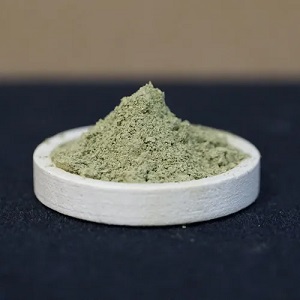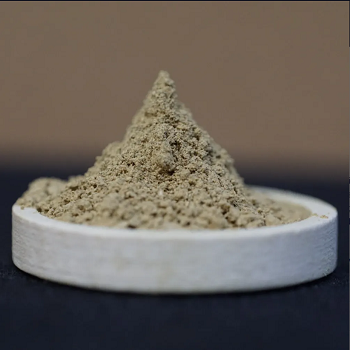Kratom is now available in grocery stores, health food stores, cocktails, cookies, and bath bombs. If you’re looking to buy hemp Kratom products, you must do your homework and understand where the items come from. Not all kratom products are made equal, and for the time being, one of the best ways to ensure that the kratom products you’re buying are safe, pure, and of high quality is to rely on Kratom Lab Test Results.
Third-party testing is vital in a world where corporations must hold themselves accountable, but sorting through the information in these reports may be time-consuming and downright perplexing. That’s why we’ve put together this helpful guide to show you what to look for in kratom lab test results and how to tell the difference between the good, the terrible, and everything when purchasing kratom products.

Why Is It Critical For Businesses To Provide Third-Party Lab Testing?
Regarding kratom products, third-party lab testing currently distinguishes the excellent from the bad. Third-party lab testing means a kratom company sends its product to an independent company to be tested for kratom concentration and pesticide residue.
Third-party lab testing is necessary to control the quality of every batch of kratom purchased from Southeast Asia. It is an expensive but highly dependable procedure. Sending small batch samples out for lab testing requires a substantial amount of time, money, and other resources, but it is an investment in the quality of kratom.
Unfortunately, many kratom product providers need to be more honest about what is and isn’t in their products because they don’t have to be. Third-party lab testing assists kratom enterprises in ensuring their goods’ quality and offers consumers assurance of quality.
What Can We Infer From Kratom Lab Test Results?
Several compounds are highly toxic to people; thus, most third-party lab testing is done to ensure that none of these toxins are present in kratom products at these levels.
This is why so much research on drugs like kratom focuses on concentrations. Testing agents ensure that no harmful quantities or concentrations of chemicals are identified.
Most Kratom lab results will reveal three key things:
- Identity
- Heavy metals
- Pathogens
- Alkaloids
Let’s find out more information about each of these groups.
Identity
The entire point of having items evaluated by third-party labs is to demonstrate consistency in that the product contains the accurate information stated and, more importantly, for transparency. It’s critical to ensure that the product a consumer buys is kratom and is secure for them to consume because producing kratom is a complicated procedure.
Heavy Metals
A heavy metal test identifies the concentrations of hazardous metals in the substance or extract. The most common combinations tested are
- Lead
- Mercury
- Arsenic
- Cadmium
Because heavy metals are utilized in industrial applications such as the fabrication of insecticides, batteries, alloys, electroplated metal components, textile dyes, steel, and so forth, people need to be aware of their exposure levels. Due to the possibility of such, poisoning may develop after either a brief, intense dose or a prolonged, chronic exposure.
Keep in mind that it is impossible to remove all signs of dangerous drugs entirely. The entire purpose of third-party lab testing is to obtain factual knowledge about the concentrations of these compounds in the sample being examined and then to convey that knowledge to you, the kratom consumer.
Pathogens
Although pathogens are common, they can seriously harm human bodily systems. Interestingly, infections are absent from kratom while it is still growing; thus, reading kratom lab test results are frequently like viewing a picture of how the plant was gathered, prepared, and stored.
A third-party laboratory tests mold, coliforms, salmonella, and E. coli. The leaves were picked off the ground rather than taken off the tree if any of these diseases were present. It might also mean mold developed since the leaves were kept in a moist environment.
Alkaloids
Numerous lab reports also include a final point focusing more on quality than risk. Most kratom vendors and suppliers will test their products for the presence of particular plant alkaloids.
The kratom plant naturally contains alkaloids. However, the number of alkaloids in any strain might differ depending on how long the leaves were processed, stored, and harvested. Companies can guarantee the potency and purity of their kratom products are consistent and of the highest caliber through third-party lab testing for particular plant alkaloids.
Mitragynine and 7-hydroxymitragynine are the two main alkaloids that provide kratom with its physiological effects. Thus laboratories check for them. But remember that there are over 20 distinct alkaloids in kratom, and the concentrations of each one vary depending on the strain. A growing number of laboratories are expanding the panel of alkaloids they employ to test kratom. Some of them can currently identify up to ten alkaloids in meager amounts.
Understanding Kratom Lab Test Results
Now that you are more knowledgeable about what should and shouldn’t be present in kratom let’s speak about what to look for on a lab report.
- Verify that a reputable third-party laboratory, not the vendor, performed the tests.
- Look for a lot number and batch number on the packing.
- Coliforms: less than 10,000 CFUs per gram
- Arsenic: less than 2 PPM
- Cadmium: less than 0.85 PPM
- Lead: less than 1.2 PPM
- Mercury: less than 0.41 PPM.
- Salmonella, Staphylococcus aureus, and E. coli shouldn’t be detected in the tested quantity.
- Less than 100,000 CFUs per gram of yeast and mold

Closing Thoughts
Ultimately, an excellent method to ensure that you’re getting what you paid for is to be sure that the firm from whom you buy kratom products has third-party lab testing. Wherever you purchase your kratom from, it’s essential to be concerned about the product’s origin. We advise you always to request detailed kratom lab test results.


Latest from our blog
Please Read….This is Urgent
In loving memory of Ryan, a special individual who recently passed away, we honor his [...]
Damiana Exposed: Special Look At Turnera diffusa (2023)
Damiana Exposed: Special Look At Turnera diffusa (2023) Damiana is a wild shrub native to [...]
Kanna: A New Look At An Exciting Mood Booster (2023)
What is kanna? Some say the botanical has similar effects to MDMA, or ecstasy. Others [...]
Blue Lotus Flower: Unveiling Its Mystical & Therapeutic Powers
To cut to the chase and pickup potent 25x blue lotus extract today while enjoying [...]
Red Bubble Kratom Extraction: A Comprehensive Guide
As a kratom enthusiast, have you ever wondered if there was a method for getting [...]
Aug
Maeng Da Kratom 101: Accurate Info You Can Trust
Maeng Da kratom may be the most popular kratom strain on the market today. The [...]
Aug